It has been a long time since my family, and I have taken a proper vacation. And while this trip was mainly to visit family, it was a vacation. The past few years have limited how far we can go from home. So taking advantage of parental leave, we took a flight out west to visit family who won’t be coming out east soon. We crossed the 100th Meridian into the great plains and visited Queen’s City, Regina, Saskatchewan.

Minolta Maxxum 70 – Minolta Maxxum AF 28mm 1:2.8 (Yellow-12) – Arista EDU.Ultra 100 @ ASA-100 – Tetenal Neofin Blau (1+9) 8:00 @ 20C
Formed out of an ancient sea, the great plains that spread out across the middle of North America saw their earliest human habitation, 6000 BCE. The indigenous civilisations that followed were nomadic, following the herds of buffalo that they hunted. These peoples formed the Cree and Blackfoot, that European explorers first contacted in the 17th Century. Explorers were followed by fur traders and the Metis, a group of indigenous mixed European and Indigenous peoples; the French and British would establish trade forts in the mid-18th Century. Where the modern city of Regina sits, it fell under the control of Spain and then France as part of the Louisianna Territory until 1803, when Napoleon arranged for the sale of the territory to the fledgling United States. It continued under US control until the treaty negotiations established the 49th Parallel as the border between the United States and British North America in 1818. When the British Parliament dissolved Rupert’s Land and sold it to the Dominion of Canada in 1870, it formed the North-West Territories. The collapse of the Buffalo hunt in 1874 forced Ottawa to start to take action, signing a series of land treaties and establishing Indian Residential Schools; the schools were officially designed to teach Indigenous children ways of the West, but in reality, were little more than institutionalised cultural genocide. Already at odds with the Indigenous population who pushed back against increased colonisation and at the urging of Lieutenant-Governor Edgar Dewdney, Ottawa signed the Fort Qu’Appelle Treaty (Treaty 4), which included a spot known as Oskana kâ-asastêki, literally place, where bones are piled, or Pile-Of-Bones in Cree. Dewdeny sees this as an ideal spot along the Canadian Pacific route. While Dewdeny had significant land holdings, when the railway went through in the 1880s, it did not go near enough to Dewdeny’s land. Regina was officially founded in 1882, named by Princess Louisa, Duchess of Argyll, for her mother, Queen Victoria. Between the presence of the railway and the cheap land, the population grew, and Dewdeny declared Regina the new capital of the North-West Territories in 1883. He established several government buildings, including a vice-regal residence, administration building and court. He ordered the North-West Mounted Police Headquarters to relocate to the new town and, the next year, established a training depot for recruits. In 1885, in response to inaction by Ottawa to address their grievances, several indigenous tribes rallied around the Metis leader Louis Riel. They began to rebel against the Canadian and colonial governments of the region. While the fighting remained outside of Regina, being the capital, the town became a key staging point for the response by the North-West Mounted Police and local militia forces. Ottawa deployed active militia troops from the east using the Canadian Pacific Railway, including infantry, cavalry, and artillery. The North-West Resistance (or North-West Rebellion) lasted a little under two months and ended with the capture of Riel, Pîhtokahanapiwiyin (Poundmaker), and Mistahi-maskwa (Big Bear). The trial of Riel took place later in 1885 in Regina, a show trial which resulted in a treason verdict and the execution by hanging at the NWMP headquarters in November. Starting in 1903, Regina’s growth began to increase as new immigrants, cheap railway fees and land availability all contributed to this rush to the West. When the last of the North-West Territories was split up into Provinces, Saskatchewan was made a Province in 1905, and Regina was named the capital a year later. The new Provincial Legislative building began in 1908 (Completed in 1912), along with a vast amount of new construction of public, commercial and private buildings. As the railway increased operations, a vast warehouse district began to form north of the CPR tracks. A new Union Station opened in 1911, joining with the new Canadian Northern Railway. This wasn’t without problems; a tornado ripped through the city in 1912, causing massive property damage and killing thirty people. A sharp economic decline followed this in 1913. The war, however, changed all this, and Regina became a major source of grain to support the war effort. After the war, the city rode high; the 1920s again brought prosperity and growth. But this was short-lived; the economic collapse of 1929, followed by the depression, was only made worth it by crop failures. Again Ottawa’s failure to respond to the needs of the West caused a small group of unemployed Canadians to begin a train ride east to protest directly in Ottawa in 1935. The group moved east, gained numbers, and numbered 1800 when they arrived and camped at Regina’s exhibition grounds. With the Royal Canadian Mounted Police headquartered in Regina (the North-West Mounted Police merged with the Dominion Police to form the Royal Canadian Mounted Police in 1920), Ottawa saw the chance to disrupt the protest before it got further east. When a public meeting and demonstration were planned, RCMP riot officers waited for the signal and stormed into the group; things got violent when the demonstration was pushed back. As the violence spread, protesters and RCMP officers clashed downtown and at the exhibition grounds, and civilians were caught in the middle. Hundreds were injured, but only one (an RCMP officer) was killed (it is guessed by friendly fire). When things settled, the Provincial and City governments laid the blame at Ottawa’s feet, while Ottawa tried to frame the protests as the instigators. Eventually, Ottawa agreed to pay for damage and to feed the protesters camped out, but the protest fizzled out and never made it any further east. Regina’s fortunes again reversed when the Second World War opened in 1939, the factories churned out war materials, and the men of the Regina Rifle Regiment were among the Canadian troops that landed at Normandy on D-Day and played a key role in preventing a German breakthrough in the days that followed the landings. In the post-war, Regina again saw a great deal of expansion, annexing several smaller towns and rural areas surrounding the city. Manufacturing, Steel and Petroleum industries allowed diversifying the city’s economic base. While a great deal of urban renewal occurred through the 1970s and 1980s, an economic downturn through the 1990s saw many historic buildings survive. The city’s government today continues to work to restore many of these buildings to help build a new city that offers up not only sources of entertainment for locals but also tourism. The warehouse district, old Union station and several historical buildings that trace to the days of the North-West Territories are restored and provide a great deal of history, craft brewery and culture.
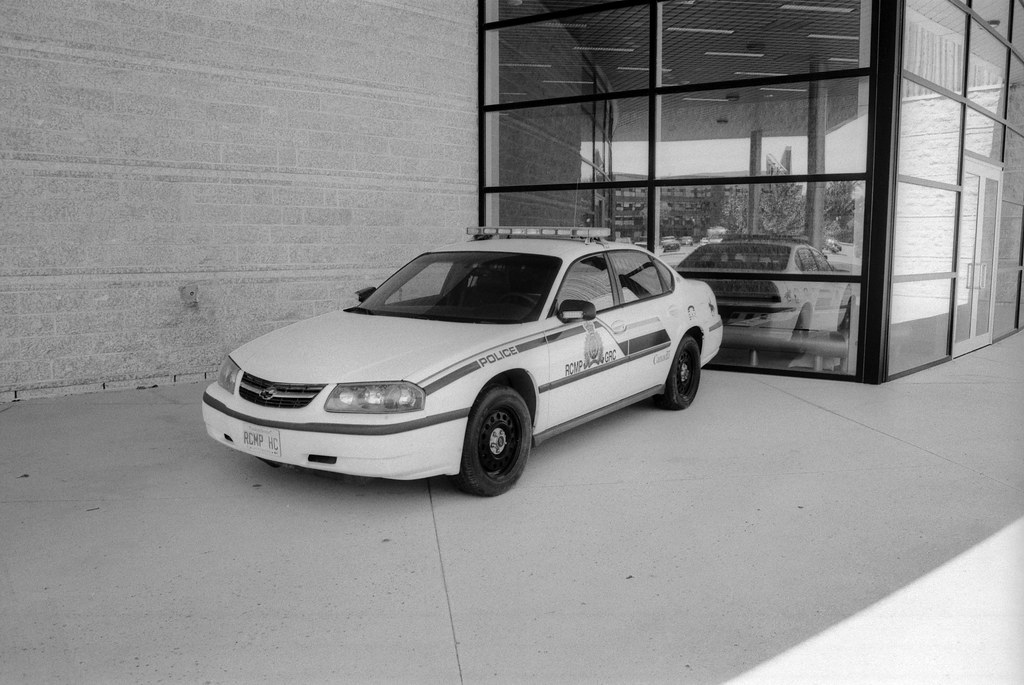
Minolta Maxxum 70 – Minolta Maxxum AF 28mm 1:2.8 (Yellow-12) – Arista EDU.Ultra 100 @ ASA-100 – Tetenal Neofin Blau (1+9) 8:00 @ 20C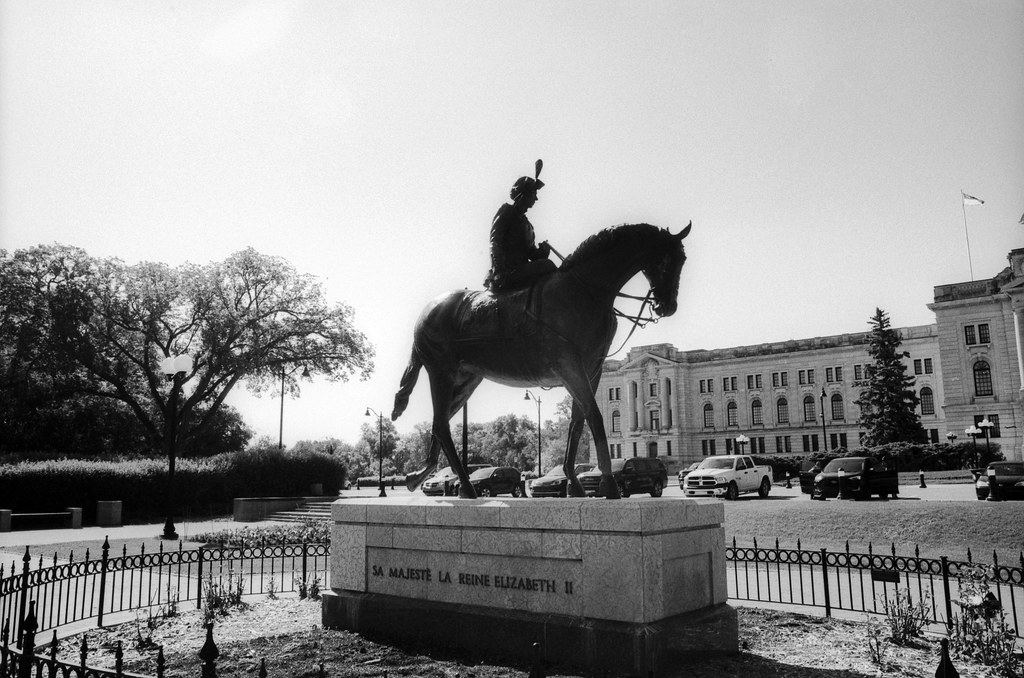
Minolta Maxxum 70 – Minolta Maxxum AF 28mm 1:2.8 (Yellow-12) – Arista EDU.Ultra 100 @ ASA-100 – Tetenal Neofin Blau (1+9) 8:00 @ 20C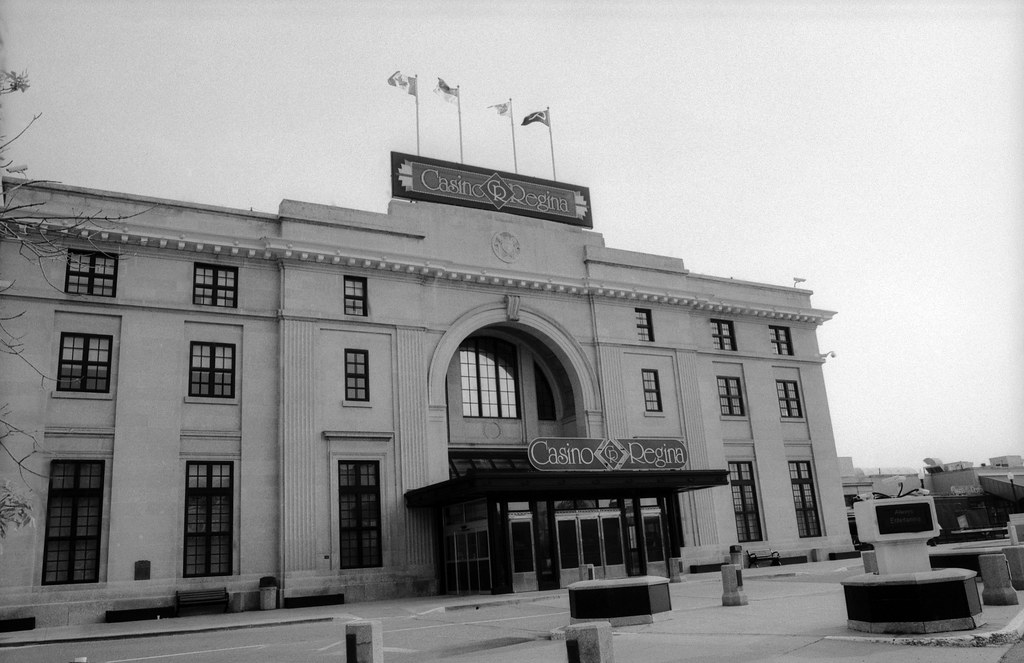
Minolta Maxxum 70 – Minolta Maxxum AF 28mm 1:2.8 (Yellow-12) – Arista EDU.Ultra 100 @ ASA-100 – Tetenal Neofin Blau (1+9) 8:00 @ 20C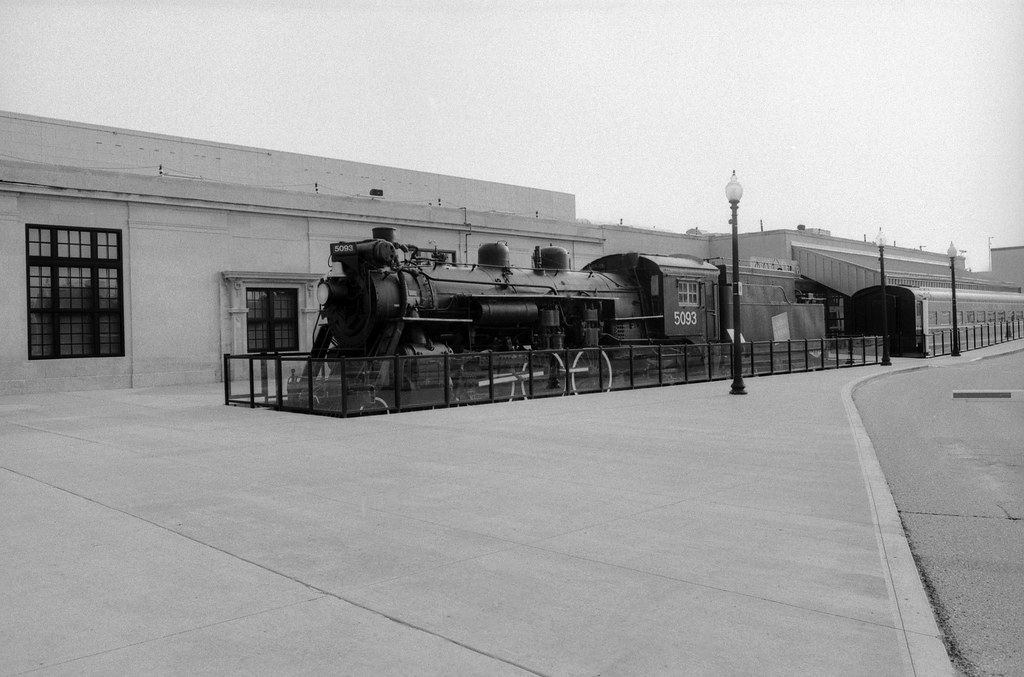
Minolta Maxxum 70 – Minolta Maxxum AF 28mm 1:2.8 (Yellow-12) – Arista EDU.Ultra 100 @ ASA-100 – Tetenal Neofin Blau (1+9) 8:00 @ 20C
The trip to Regina was mainly to visit family, so photography took a secondary role, but I still managed to get most of my hit list during the four days out. Having seen Regina before, I had a good idea of some of the locations I missed the last time and the ones I wanted to include. So after writing out the history part of the city, I made a point to capture locations that directly related to the narrative I crafted. Having the camera with me always helped me grab photos while travelling to and from various destinations. Now the one thing I could not get was a good skyline shot of the downtown or a “Welcome to Regina” sign, there is one at the airport, but I never got the chance to get a picture of that. So I used a photo of the Albert Street Bridge; while not the best shot for the feature, it works in a pinch. Of course, I had to include some photos from the RCMP Heritage Centre, namely a modern liveried Chevy Impala, a statue of her late majesty of happy memory, Queen Elizabeth II. What surprised me was how often the late Queen visited the province. Both are key as the RCMP traces its heritage to the North-West Mounted Police and early police force created in 1873 to patrol the Canadian “Wild West.” And the former Union Station and a CN Locomotive are on display, as colonisation would never have occurred in the territory (for good or ill) without the railway. The next set is photos representative of government power, including the original Government House, the former territorial administration building, the modern Provincial Legislature and the Armouries. The final set is from the last day out, and my quick go about grabbing and finishing the roll in the warehouse district and the city centre. While I had some items on my list and never got to (family is more important), I’m happy with the images and stories that are told through these.

Minolta Maxxum 70 – Minolta Maxxum AF 28mm 1:2.8 (Yellow-12) – Arista EDU.Ultra 100 @ ASA-100 – Tetenal Neofin Blau (1+9) 8:00 @ 20C
Minolta Maxxum 70 – Minolta Maxxum AF 28mm 1:2.8 (Yellow-12) – Arista EDU.Ultra 100 @ ASA-100 – Tetenal Neofin Blau (1+9) 8:00 @ 20C
Minolta Maxxum 70 – Minolta Maxxum AF 28mm 1:2.8 (Yellow-12) – Arista EDU.Ultra 100 @ ASA-100 – Tetenal Neofin Blau (1+9) 8:00 @ 20C
Minolta Maxxum 70 – Minolta Maxxum AF 28mm 1:2.8 (Yellow-12) – Arista EDU.Ultra 100 @ ASA-100 – Tetenal Neofin Blau (1+9) 8:00 @ 20C
This was not a photography trip; I still need help with the 28-100. I have since found a second 28-100 (free) in better shape, but it needs some help with the front and rear elements. However, it does autofocus cleanly; I have since sent both to a friend who wants to learn how to fix them. Also, knowing I would have some space restrictions with more digital gear and lenses than anything else, I stuck again with the trusty 28mm f/2.8 lens and kept that yellow-12 filter mounted. For the developer, I went super exotic with Tetenal Neofin Blau (Blue) this time. This is a developer designed for films that are slower than ASA-200 and produces amazing results in both fine grain and edge sharpness. And you know I’m happy with these results. Neofin Blau is designed to increase shadow detail, which is probably why the negatives ended up being dense. Although these were a little too dense, thankfully, I could pull out enough detail to make things work. A 5% decrease in the development time to compensate for the rotation of my processor would have helped make things a little better.

Minolta Maxxum 70 – Minolta Maxxum AF 28mm 1:2.8 (Yellow-12) – Arista EDU.Ultra 100 @ ASA-100 – Tetenal Neofin Blau (1+9) 8:00 @ 20C
Minolta Maxxum 70 – Minolta Maxxum AF 28mm 1:2.8 (Yellow-12) – Arista EDU.Ultra 100 @ ASA-100 – Tetenal Neofin Blau (1+9) 8:00 @ 20C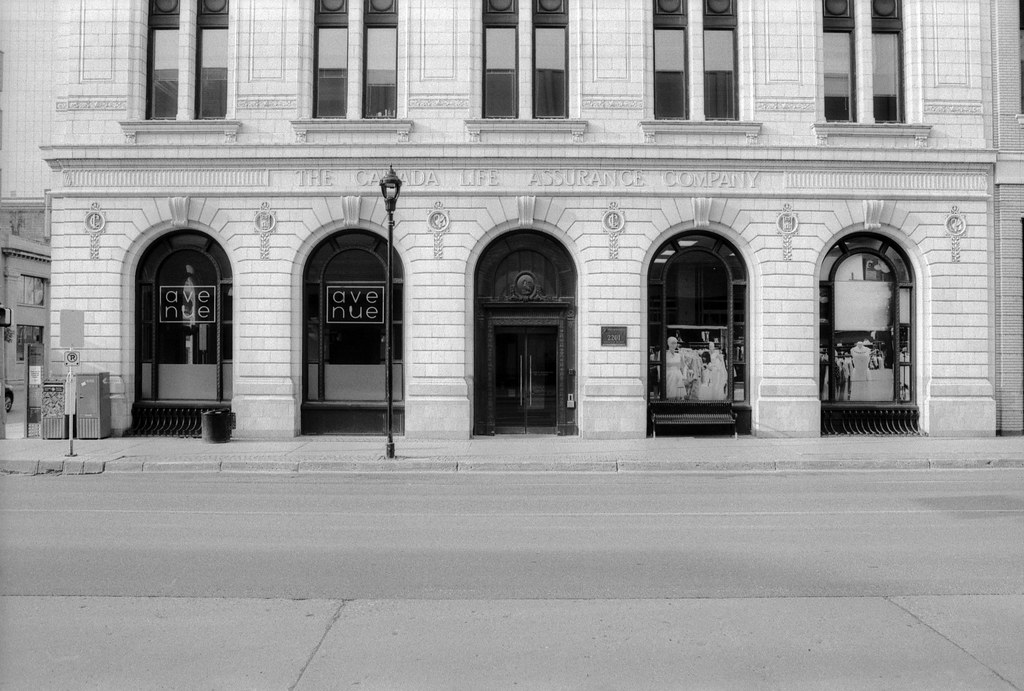
Minolta Maxxum 70 – Minolta Maxxum AF 28mm 1:2.8 (Yellow-12) – Arista EDU.Ultra 100 @ ASA-100 – Tetenal Neofin Blau (1+9) 8:00 @ 20C
Minolta Maxxum 70 – Minolta Maxxum AF 28mm 1:2.8 (Yellow-12) – Arista EDU.Ultra 100 @ ASA-100 – Tetenal Neofin Blau (1+9) 8:00 @ 20C
While Regina may not be the most touristy city out there, the city has a lot to offer for photographers. There are many surviving historic buildings throughout the area, and the sunset ceremony at the RCMP training depot is always worth a watch in the summer. And you can drive to some exciting places relatively quickly. Moose Jaw and Clay Bank are two excellent locations that are photogenic. You can see all my vacation photos over on Flickr if you want. Next month we’re heading to Elora, Ontario during the Canada Day long weekend that netted an extra day because of the holiday falling on a Saturday this year!